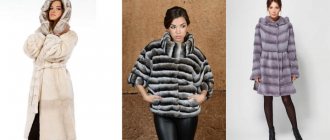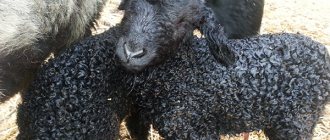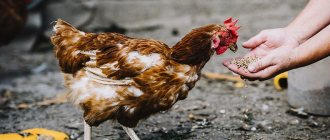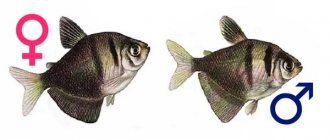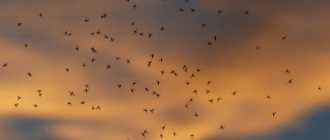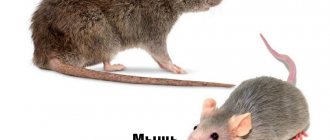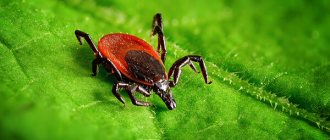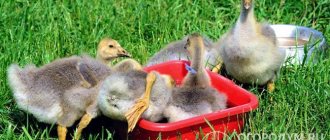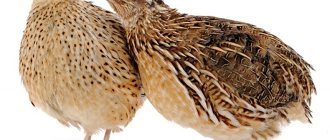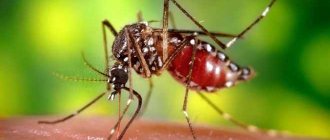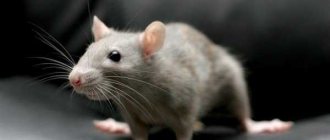In cold weather, cozy, fashionable fur adorns our clothes - they are used to trim coat collars, hoods, hats and even shoes. Some people prefer completely fur outfits - fur coats, coats, vests.
The material differs in color, texture, cost and many other characteristics, but there are only two main types. And the question in this regard is eternal: how to distinguish natural fur from artificial fur. It is important to have an answer to this in order to correctly determine how to care for an item and fairly evaluate fur products when selling or buying. Also, knowing the “topic” will protect you from scammers and protect you from losing money.
After reading our article and looking at the photo, you will easily find out which fur is natural or synthetic, and will avoid many problems.
Where to buy
You can buy a fur product in a specialized store or company showroom. Here, all samples will be accompanied by quality certificates and a guarantee. So you don’t have to doubt the authenticity of the fur. However, in such a place you will overpay for the brand.
You can make a cheaper purchase at a clothing market or small shops. In this case, it is better to contact those who have been in this business for several years and have established themselves as a reliable seller.
What is a mouton?
Not everyone knows from what animal fur such fur coats are made. If by the name of a mink or sable product it is immediately clear what raw materials are used for its production, then in this case the word “mouton” does not clarify the situation, but only confuses it further. To answer this question, it is enough to know what is hidden under the word “mouton”. It comes from the French “mouton”, which translated into Russian means “ram, valukh, sheepskin”. Based on this, it is easy to conclude that mouton fur coats are made from specially treated sheep skins.
Features of real fur
No matter how much the seller praises his product, it is still better to see for yourself its quality.
- Today we have learned to produce synthetic fur of excellent quality, which is hardly distinguishable from the real thing. Run your hand through the fur. It should be smooth and tender to the touch, but at the same time dense. It's like ironing silk fabric.
- Crumple the edge of the product. The area that has easily restored its shape will indicate the authenticity of the fur.
- Smell the product. It should smell like tanned leather, but not like paint or synthetics.
- Under the lining there should be a stamp from the manufacturer of the product with information about the origin of the fur.
By the way, read this article too: How to distinguish original Palace items
How to distinguish real fur from artificial fur
All manufacturers tend to want to reduce the cost of producing their products as much as possible in order to obtain maximum profits. This desire has not bypassed the global fur industry. Increasingly, fur factories are trying to pass off artificial material as its natural counterpart, and with the development of technology, the substitution is becoming more and more difficult to determine.
Natural fur retains heat much better than all other materials, and the replacement will make itself felt already at the first good frost. However, how to recognize it at the stage of product selection? Only a few fur hat stores are guaranteed to use only natural fur, which has excellent heat-saving properties. For all other retail outlets, you should take on board a few simple tips from fur specialists that will allow you to accurately recognize an artificial fur substitute.
Sign one
First of all, you should pay attention to the product tag, because most often natural fur is bought in the form of clothing, headwear or accessories, and all of them must have a label with comprehensive information about the composition of the material, its origin and the manufacturer. In addition, manufacturers often provide information about product care and cleaning tips. However, the sewn-on label is not always true, so if the question is Where to buy a fur hat? - then it’s better to immediately turn to professionals, such as the Fair of Caps factory. On our website you can easily find the most fashionable and pleasant new thing, both for yourself and for your loved ones.
Sign two
Another sign of natural fur is the weight of the product; it will always be a little more than that of a similar model made of artificial material. Real skins of fur-bearing animals cannot be cheap, so pay attention to the price, if it is not too high compared to products of this class - you should take a closer look at it.
Tactile sensations will help in identifying a fake: the natural material is soft, smooth to the touch, lies beautifully and plays in the sun, it feels like you are stroking a soft, fluffy animal. At the same time, the synthetic substitute is a little rougher, tougher, and feels like a soft synthetic children's toy.
Main tests
Experienced specialists in the field of fur products recommend carrying out three simple tests that will accurately determine what kind of material you have:
- Fire test. All you need to do is tear out a small piece of wool from the fur base and set it on fire with a lighter. The natural base will quickly burn, releasing the corresponding smell of burning wool, which is quite unpleasant. Synthetics, on the other hand, will practically not burn - it will only melt a little, turning into a dense droplet. At the same time, the smell will be different: burnt rubber.
- Pin test. The natural base of the skin is usually very dense. Therefore, it will be quite difficult to pierce it with a pin or needle, whereas they will enter into synthetic fabric easily and unhindered.
- Basics test. All you need to do is look under the lining or push the dense pile firmly apart with your hands. In an artificial substitute, a dense synthetic, stretchy base will be visible; in a natural analogue, leather will be visible.
It should be remembered that recently products made from natural materials are becoming increasingly rare, because they are expensive and require more careful care. But artificial fur is becoming more and more perfect, and it is becoming increasingly difficult to distinguish it from the natural skins of fur-bearing animals. Therefore, when purchasing natural fur, you should be as careful as possible and use the above recommendations.
Distinguishing fur
It often happens that the fur seems to be natural, but not from the animal that the seller insists on. In order not to buy cheap fur for crazy money, remember the following:
- – mink fur can be replaced with the fur of a rabbit, marmot or steppe mink. Real mink fur feels like oil and has a dense, even pile. Its hairs are of equal length, with a soft undercoat. Each villi tapers from root to tip. Mink skins are monochromatic, but the degree of coloring should be different.
- -beaver fur has a dense undercoat. It feels very soft and fluffy. Usually they try to pass it off as nutria fur, which is tougher and shorter.
- -silver fox fur is long and soft to the touch. Each of its fibers includes three shades of color.
Natural and artificial mink. Differences.
The easiest way would be to say that natural mink fur differs from artificial fur, “like heaven from earth.” But modern technologies and advances in the chemical industry make it possible to achieve a high degree of similarity between materials, at least at first glance. So let's take a closer look.
- Weight. Comparing natural and artificial fur coats of approximately the same size in weight, you will find that an artificial fur coat is much heavier.
- Luster and characteristics of fur. The noble silky shine of mink fur cannot be faked. This is especially noticeable in comparison. Iron your fur coat against the lint: faux fur will not return to its original state as quickly as natural fur.
- Underfur and underbelly. Extend the fur to the base. Natural mink is famous for its thick, dense underfur, which perfectly protects heat. Faux fur has no underfur. The basis of the faux fur is fabric or thick knitwear, and this is clearly visible.
In wear and operation, the differences are even more significant:
- An artificial fur coat loses its original appearance after 3-4 seasons, while a natural mink will last more than 10 winters, maintaining its beauty.
- Artificial mink will not warm you in frost below 10-15 degrees. As we said, this fur does not have a warm underfur, while a natural mink coat will protect you in the most severe frosts, even in the Far North.
How to identify a real mink coat
A mink coat is the dream of almost every woman. It looks very rich and lasts a long time. Every lady feels like a queen in it. In order for the feeling to be exactly that, it is important to purchase a fur coat from real high-quality mink.
Appearance
Putting the fur coat on a flat surface, let's examine the fur. It should be shiny, monochromatic, with a slight striped pattern and varying color intensities. The color of natural mink is a palette of brown and gray shades, as well as pastel tones from blue to caramel.
Let's touch the fur. It should be hard and elastic, easily return to its original shape, and not prick. The dense undercoat is clearly visible in it, and above it there are guard hairs of the same length. If the fur is not dyed, then you can find white hairs in it.
By the way, read this article too: Best inexpensive jackets for winter 2021/2022
Wrong side
As a rule, good manufacturers do not sew the lining to the fur coat. And you can calmly examine its underside. The reverse side of the skin has a light shade (if the fur has not been dyed). It must have a factory seal. Pieces of skins must be at least 15 by 15 cm in size and have the shape of an elongated trapezoid.
It is advisable that they be sewn together rather than glued - this way the fur coat will last longer.
We carefully inspect all seams.
A hemmed lining is a reason to doubt the quality of the item.
Napkin
Run a damp white cloth over the fur. After a natural mink there should be no traces left on it. If they appear, then either the mink is dyed, or it is not mink at all.
Price
As you know, a mink coat costs a lot of money. Therefore, if you are offered a mink product at a cheap price or at a discount, you should think about it. A low price may mean that it is either a fake or the fur of this mink is not of the best quality. The product could have been dyed to hide defects in the pile, or the skins may have been stretched too thin or glued together.
Another interesting way to check the authenticity of mink fur
If we wrap a real mink coat around our fist, the undercoat will create the feeling of a single flowing stream. At the same time, the groundhog will have a clear transition: the fur will lie beautifully at the edges and stick out in the middle. In addition, a mink coat always weighs less and when trying it on it may seem like you are wearing nothing at all.
Let's say the fur coat is really made of mink. But why is there such a difference in price? The fact is that many brands invest in advertising and certification of their products. This certification speaks primarily about the quality of the fur product itself. Although, unfortunately, even here replicas have penetrated.
The main differences between natural mink
Mink is highly valued in the world of fur products along with lynx and chinchilla. Every woman with refined taste and high demands in life dreams of having such a thing in her wardrobe. The fur of this animal is beautiful and durable, it looks expensive, presentable, and besides, it is really warm. A mink coat is characterized by excellent wear resistance: even in harsh climates, the wear life of the product is at least seven years, and with proper care it doubles. The quality and service life are affected by the age of the fur, what part of the skin is used (from the back of the fur coat is more expensive, from the belly and frontal part - cheaper) and the type of animal (European, American, Scandinavian and others). It is recommended to buy mink coats only in specialized boutiques, where the likelihood of encountering a fake is minimal. But even in a fashion boutique, the product should be carefully inspected and studied before purchasing. There are several criteria by which you can distinguish mink from a fake. It is equally important to be able to distinguish a mink from a rabbit and other animals by their fur. After all, fur is different from fur, and even a natural rabbit costs several times less than mink.
Pros and cons of mouton fur coats
The advantages of Mouton include:
- Availability. This fur is the most affordable of all, but it cannot be called cheap. Many fashionistas prefer to use outerwear made from it for everyday wear, leaving more expensive items for special occasions.
- Durability. In terms of wear resistance, this fur takes second place, second only to the otter. On average, clothing made from mouton can maintain its appearance for 10 seasons if properly cared for.
- Softness. Mouton is very pleasant to the touch. The tactile sensations experienced when touching it are compared to those experienced when touching velvet and silk.
- High density of pile. Thanks to this quality, coats made from this fur are not cold even in severe frosts.
- Moisture resistance. Due to the formaldehyde treatment of raw materials, products made from it are not afraid of precipitation.
- Aesthetics. This outerwear looks beautiful.
Mouton has no significant disadvantages. Among the relative disadvantages are:
- The use of formaldehyde in the production of fur coats . This is not the most environmentally friendly procedure. For this reason, the production of products from this fur is prohibited in European countries.
- Rusticism. Mouton will forever remain an ignoble type of fur, and it is unlikely that anyone will be able to look luxurious in clothes made from it. Products made from this fur are more suitable for everyday wear than for special occasions.
The disadvantages of sheepskin also include the need for careful operation, care and storage features. However, they are inherent in mink, sable, astrakhan, and muskrat products.
Distinctive characteristics of old fur
A real fur coat, made from whole skins and not dyed, may also not be of high quality. If the product is made from old fur, the fur coat will not last long.
| Characteristics | Description of features |
| Leather base | If the fur has been lying around for a long time, the leather base turns yellow. In addition to the color change, some areas may become parchment-like, and grease stains may appear. |
| Smell | Old mink has a specific smell, like hair that hasn't been washed for a long time. Sometimes the smell becomes rancid. New, fresh fur has no smell. |
| Coloring | Over the years, the fur turns yellow. This shade is especially noticeable on white and blue-gray mink. |
The older the fur, the lower its quality. The skins lose their plasticity and strength, they can “crawl” along the seams and harden.
Characteristics of individual categories
A normal factory fur coat has a certificate that specifies the categories of skins used in sewing.
| Category | Material length (in cm) | Material width (in cm) |
| "A" | Above 70 | 7.5 and wider |
| "B" | 65-70 | 7 |
| Large | 54-65 | 6,5 |
| Average | 47-54 | 6 |
| Small | 40-47 | 5 |
| Sawed-off shotgun | Less than 40 | Less than 5 |
When sewing a fur coat, skins of different categories are used. But they are all stated in the certificate that comes with the product.
Characteristics of overstretched material
The quality of the fur coat is also affected by whether the skins were stretched too much or not. Often, manufacturers of fur products resort to this trick in order to reduce the cost of the item. Of course, an overstretched skin is much worse than an ordinary skin in all its characteristic features.
Signs of overstretching:
- lack of thickness and density in the undercoat;
- hair follicles can be felt with fingers;
- the leather base is thin and rough, visually similar to a grater.
Excessively stretched skins do not have strength, and the leather base of such fur does not retain the guard hairs and undercoat.
